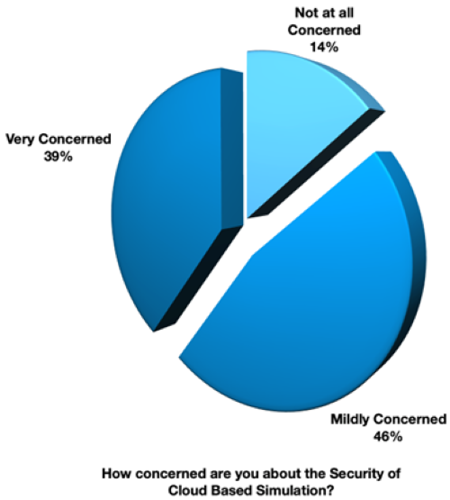Promoted content: The Cloud - A safe haven for Simulation Data
SIMUSERV UK general manager Chris Smith takes a deeper look into the security of data on the Cloud and how cloud vendors work to make the Cloud safer than your own computer.

The recent survey into Attitudes to Cloud Based Simulation run by SIMUSERV, in partnership with The Engineer, highlighted that the security of data on the Cloud is a prime concern for the majority of Engineers.

85% of Engineers expressed some concern regarding Cloud Security
When Engineers are considering using the Cloud for Simulation they are right to be concerned about security. Simulation data is rich in intellectual property containing not only the design definition but also how the design behaves in service. Protecting this kind of information is core to any innovative company.
Over the last thirty years or so, companies have grown familiar with running simulations using their own hardware at their own premises, on dedicated High Performance Hardware and, more recently, the users own machines. This has worked well, but given the specialist nature of simulation, this work still often lies outside of the main PLM system and data management tools. This means that, despite its value, simulation data is often less protected than product definition data.
Register now to continue reading
Thanks for visiting The Engineer. You’ve now reached your monthly limit of premium content. Register for free to unlock unlimited access to all of our premium content, as well as the latest technology news, industry opinion and special reports.
Benefits of registering
-
In-depth insights and coverage of key emerging trends
-
Unrestricted access to special reports throughout the year
-
Daily technology news delivered straight to your inbox










CCC Report Finds UK Climate Targets Still Within Reach
In 1990 67% of the UK´s electricity came from coal-fired power stations and even without renewables the transition to gas was a major contributor to...